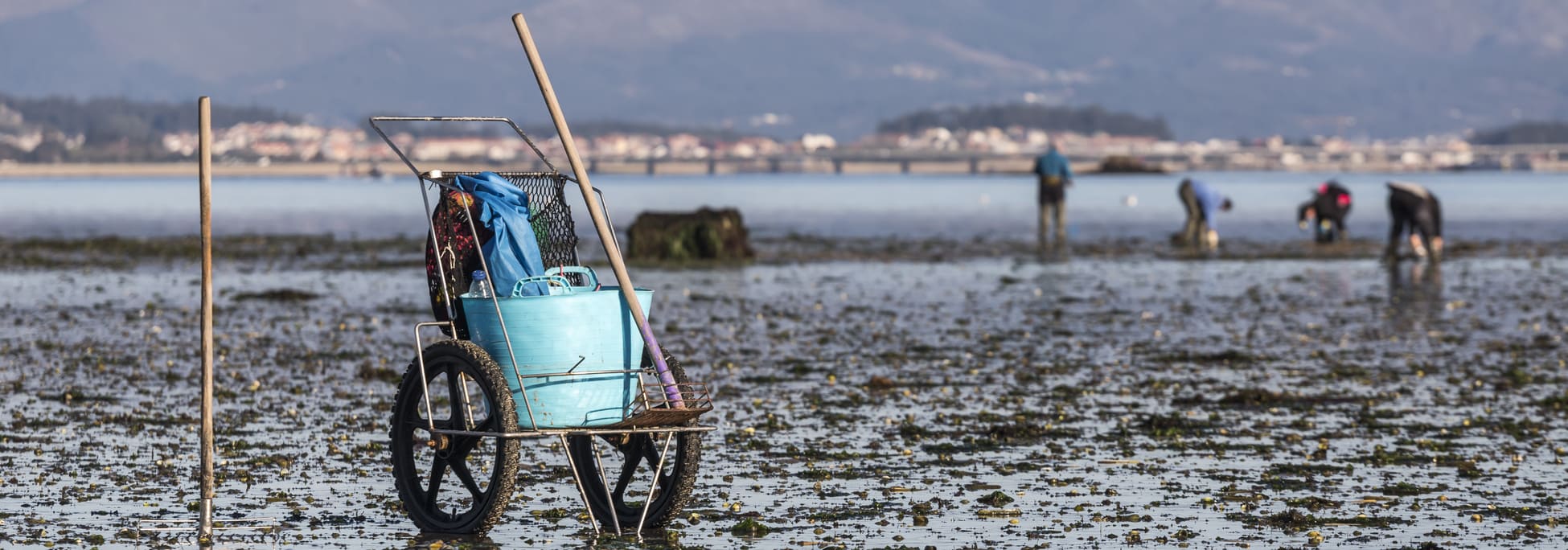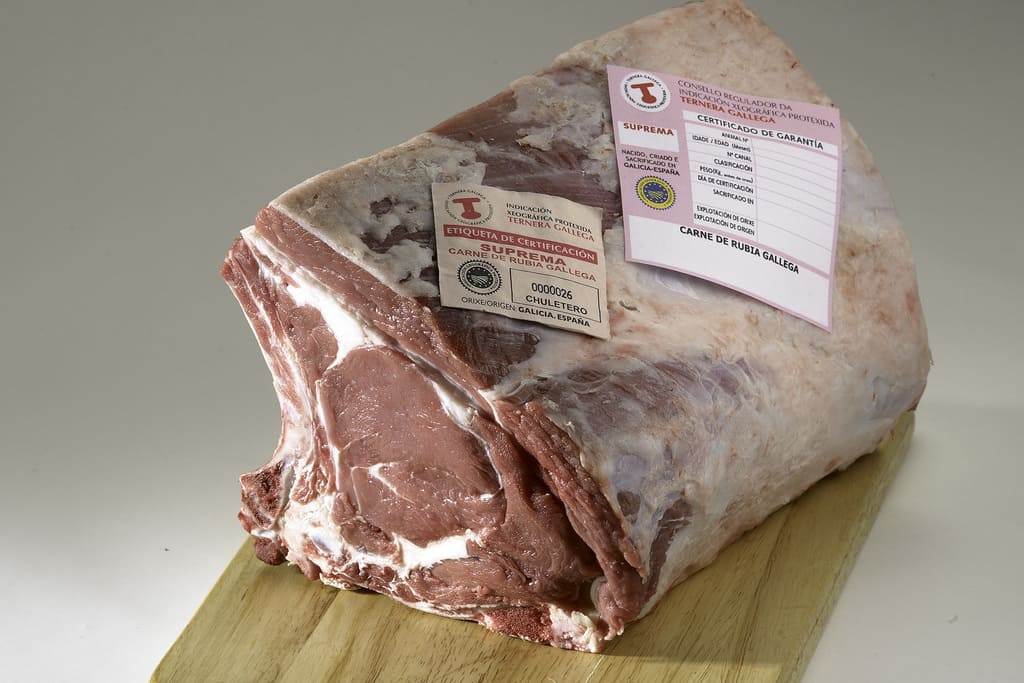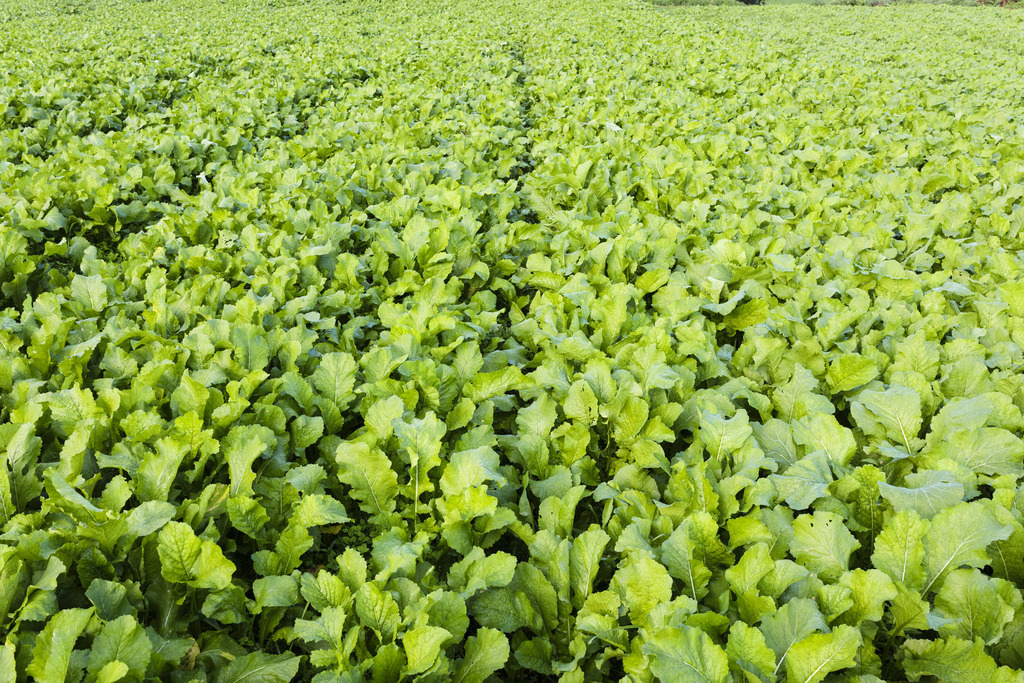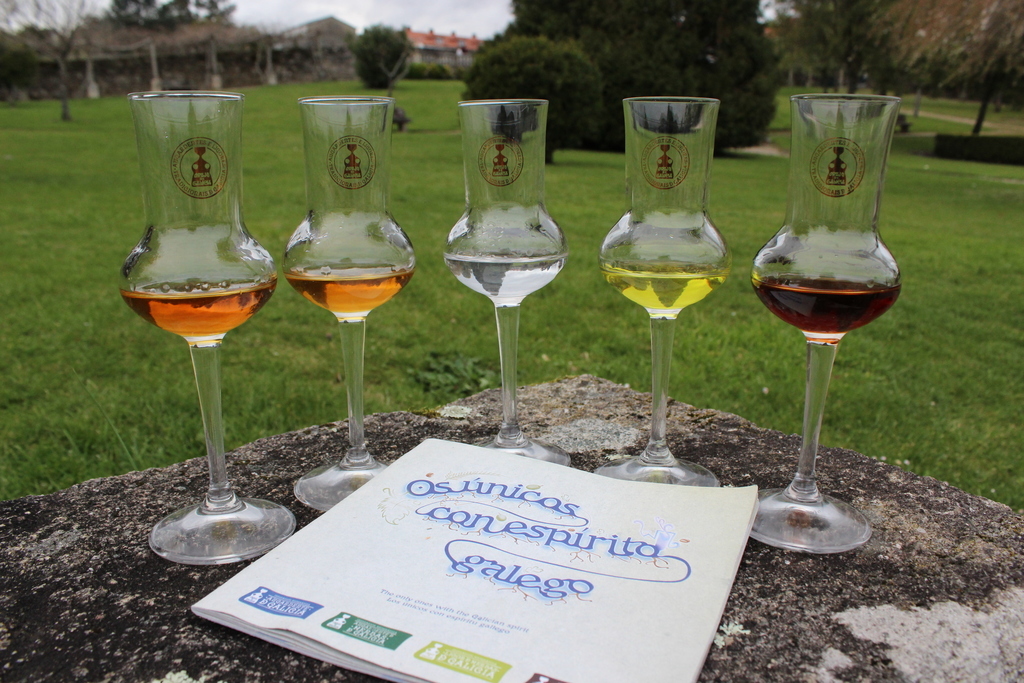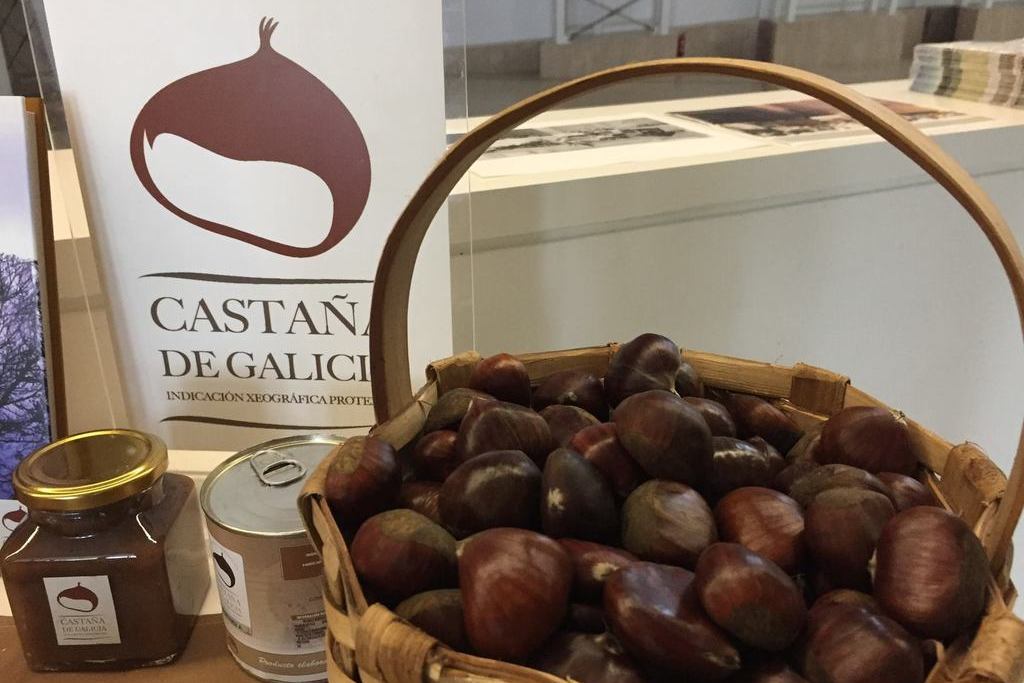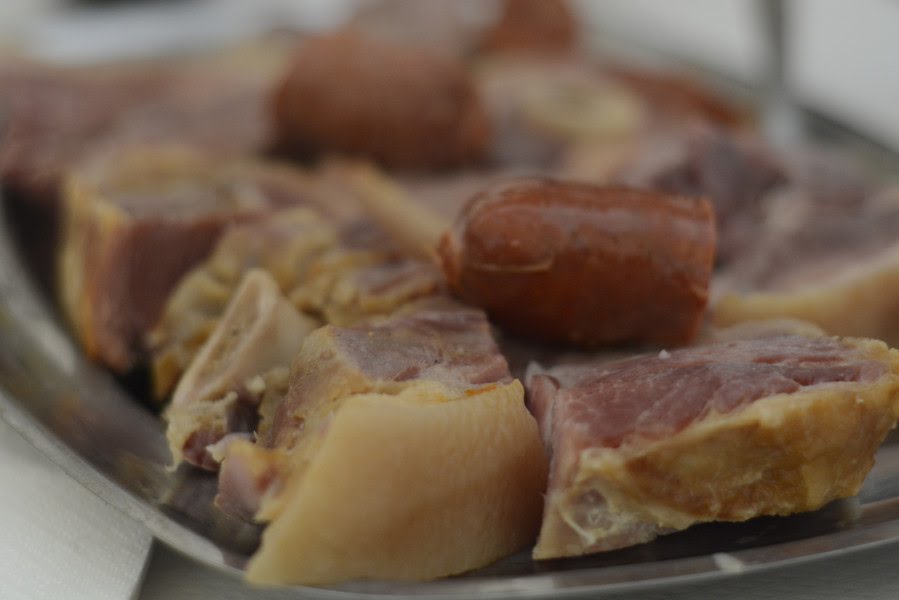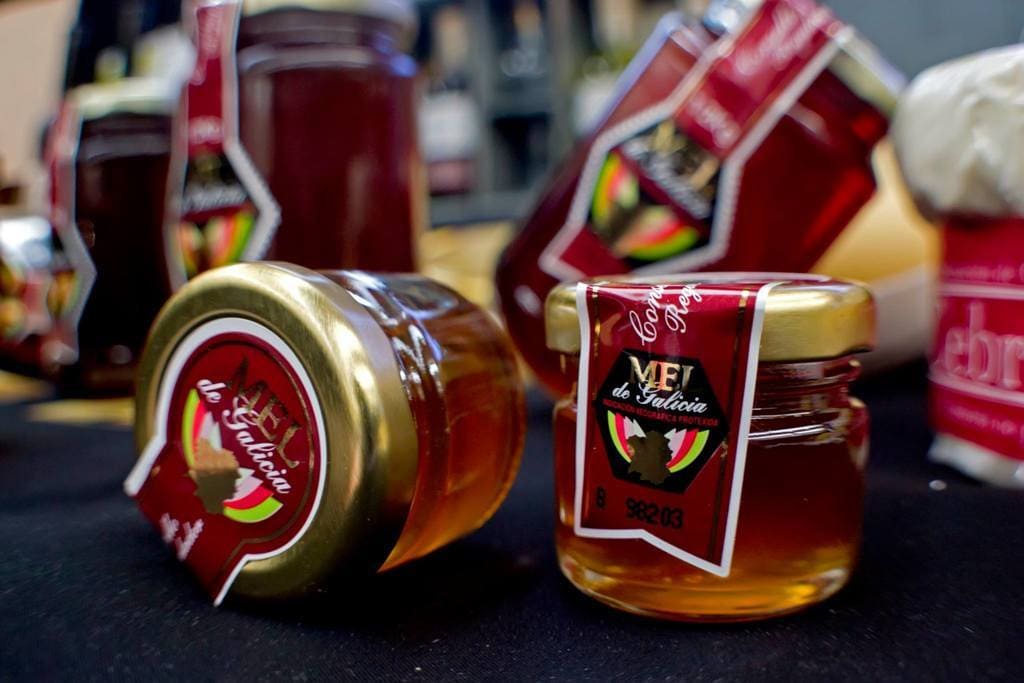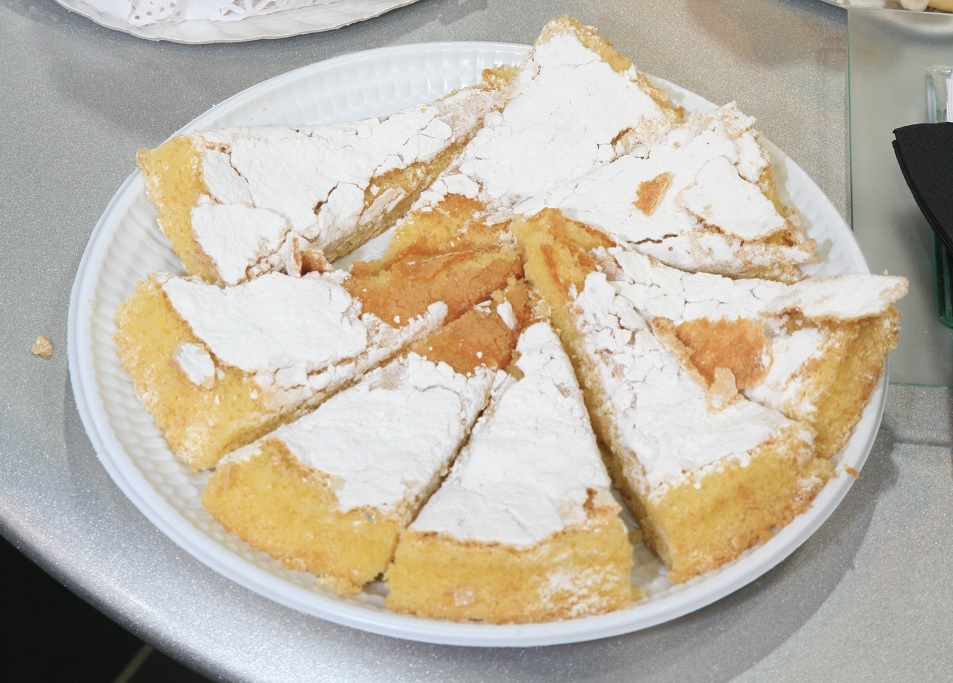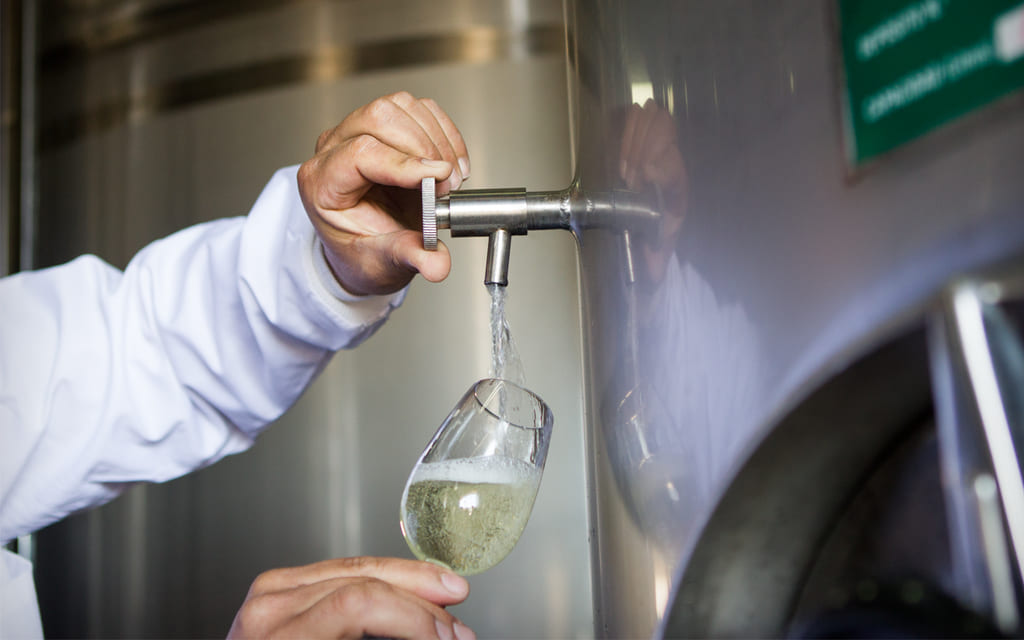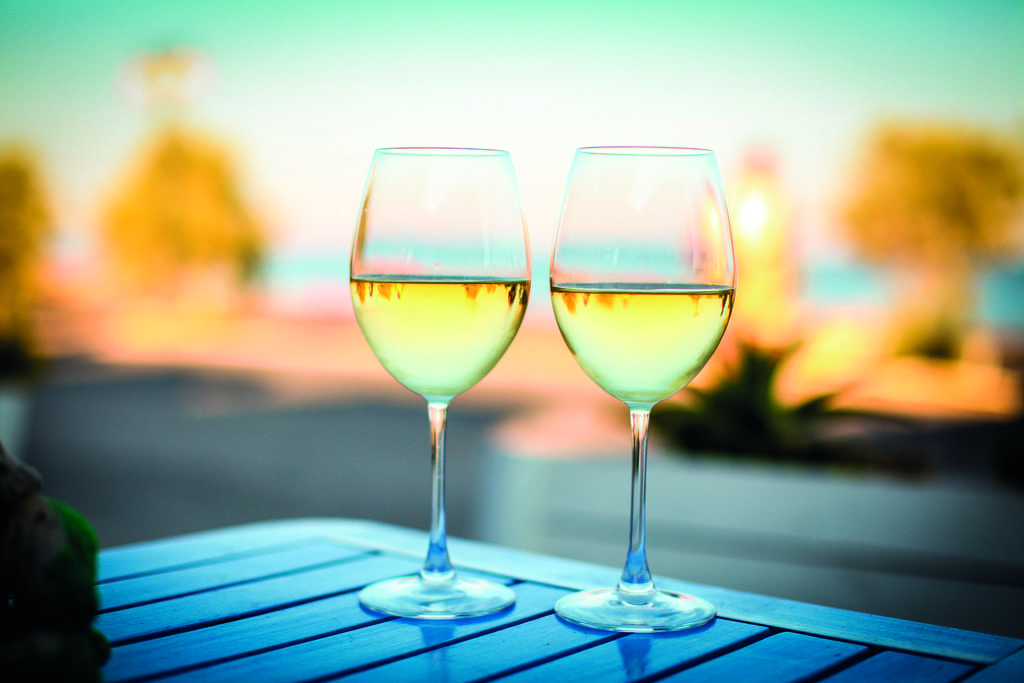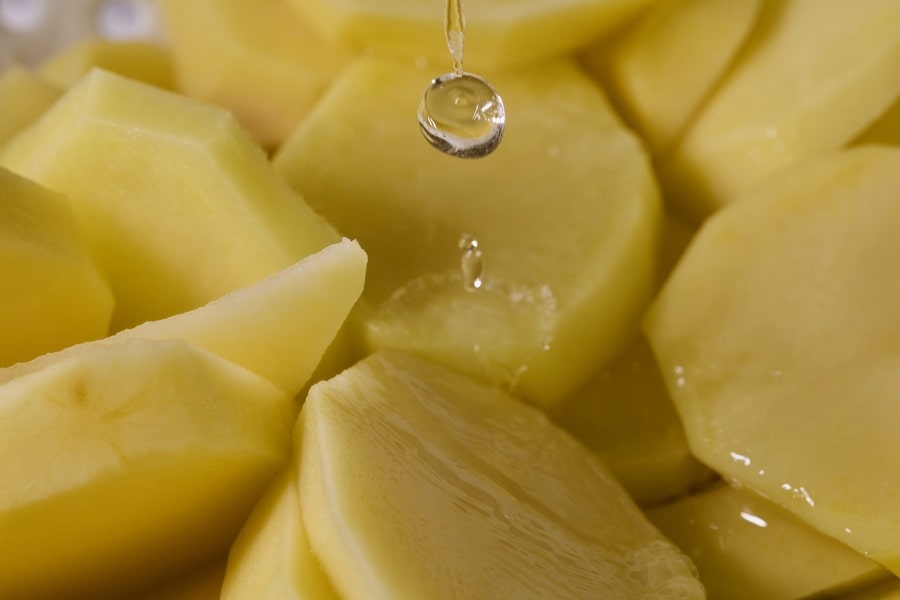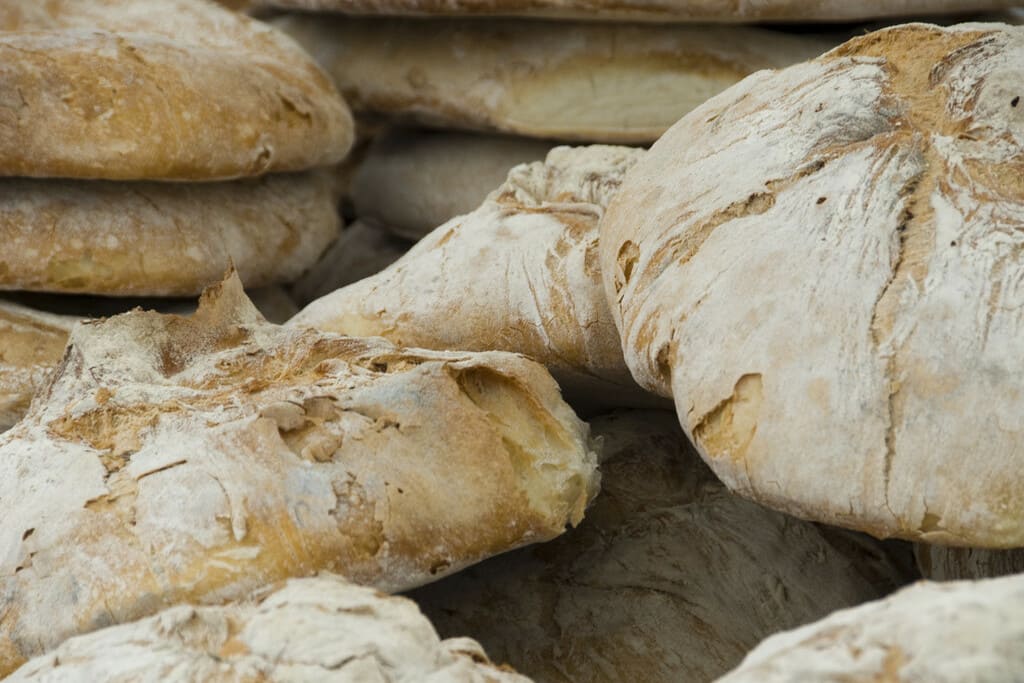Tradition and quality dishes on the table
The rich and varied cuisine of the province of Pontevedra offers many products which are protected under their own designation, thus certifying their origin and quality. Veal, lacón (salt cured pork shoulder), walnuts, honey… Discover the products under the Protected Geographical Indication (PGI) and enjoy the tasty delicacies of As Rías Baixas.
1. TENREIRA GALEGA
It certifies the products obtained from the cattle of the breeds Rubia Galega and Morena do Noroeste, from their crossbreeds and some specific crosses between them and some other breeds.The Protected Geographical Indication protects the fresh veal meat from animals born, raised and slaughtered in Galicia.
Geographical area
The area of production and slaughter includes the entire Galician region. In the province of Pontevedra the raising of bovine cattle is restricted to the town of Agolada.
2. GRELOS DE GALICIA
It is an edible vegetable of the species Brassica rapa L. var. rapa of the ecotype varieties from Santiago de Compostela and Lugo. Grelos are the edible leaves and stalks of the turnip, collected during the growing period.
Geographical area
They are produced, processed and packaged in all the Galician region.
3. AUGARDENTES AND TRADITIONAL LIQUORS FROM GALICIA
The indications Augardente de Herbas de Galicia, Licor Café de Galicia and Licor de Herbas de Galicia protect the traditional alcoholic drinks obtained from the Galician liquors known as augardentes under the Designation of Origin Orujo de Galicia.
Geographical area
The PGI includes the augardente made from the pomace of the grapes harvested in the region of Galicia.
In the province of Pontevedra these liquors are produced in the subzone of Rías Baixas, in the towns of Cambados, Ribadumia, Meaño, Arbo, O Rosal, Ponteareas, Meis and Tomiño.
4. CASTAÑA DE GALICIA
The Protected Geographical Indication Castaña de Galicia is applied to the fruits obtained from the European chestnut trees ( Castanea sativa Mill.) intended for human consumption and sold fresh or frozen. They have a sweet flavour and a firm and non-floury texture. Once harvested, these fruits have a moisture content ranging from 50 to 60 %.
Geographical area
The harvesting areas in the province of Pontevedra are the regions of Tabeirós-Terra de Montes and Deza, as well as the towns of Cerdedo-Cotobade, A Lama, Campo Lameiro and Cuntis.
5. LACÓN GALEGO
The Protected Geographical Indication Lacón Galego includes the meat of the front legs of the pork, popularly known as lacón after being cured.
Geographical area
It is produced in the whole region of Galicia. In the province of Pontevedra, pigs are raised mainly in the región of Deza, especially in the town of Lalín.
6. MEL DE GALICIA
Depending on its origin, it can be classified as multifloral honey and monofloral honey from eucalyptus, chestnut trees, blackberries or heathers.
Geographical area
The area of production, processing and canning of the honey under the Protected Geographical Indication ‘Mel de Galicia’ comprises the whole region of Galicia. In Pontevedra, this honey is mainly produced in the towns of Lalín and As Neves.
7. TARTA DE SANTIAGO
The main ingredients of this traditional Galician cake are almonds (= 33%), sugar (= 33%) and eggs (= 25%). This dessert is presented in different sizes and in a circular shape, c overed with powdered sugar with a cross of the Order of Saint James , which is its most characteristic feature. It has an almond flavour and a spongy and crumbly texture. Once cut, it has a golden colour.
Geographical area
The area of the Protected Geographical Indication includes the whole region of Galicia.
8. RIBEIRAS DO MORRAZO
The wines under this protected geographical indication are whites and reds with clean aromas that reveal the typical features of the raw material from which they are produced, with moderate alcohol content, floral and fruity aromas and a well-balanced acidity.
Geographical area
The area of the Protected Geographical Indication Ribeiras do Morrazo includes the towns of Cangas, Bueu, Marín, Moaña, Poio, Pontevedra, Redondela and Vilaboa.
9. VIÑOS DA TERRA: TERRA DE BARBANZA E IRIA
They are light, clear, vibrant wines and deep in colour; with clean aromas that reveal the typical features of the raw material from which they are produced; a moderate alcohol content and floral, and fruity aromas. In the mouth, they are fresh, tasty and balanced and with a finishing touch of acidity.
Geographical area
These wines are produced in the areas suitable for growing vineyards. In the province of Pontevedra, in the towns of Catoira, Valga and Pontecesures.
10. PATACAS DE GALICIA
The product under the PGI Pataca de Galicia is a tuber of the species Solanum tuberosum L. of the varieties ‘Kennebec’, ‘Agria’ and ‘ Fina de Carballo’, intended for human consumption. The first reference to potato cultivation in Galicia dates from an early date: they were planted before 1607 in the vegetable garden of the monastery of Herbón.
Geographical area
The processing and packaging area of this product includes the whole region of Galicia.
11. PAN GALEGO
The Pan Galego is a fluffy and irregular bread with a hard and crunchy crust, made in the traditional way from soft wheat flour. Part of the wheat used is grown in Galicia and belongs to indigenous varieties or ecotypes, commonly referred to as trigo do país (wheat grown in the region) or trigo galego (Galician wheat). The production process is characterised by using sourdough and a great amount of water, as well as by long rising and baking times.
Geographical area
This bread is produced in the whole region of Galicia. In the province of Pontevedra, the bread from the town of O Porriño and the region of Deza is highly appreciated.






